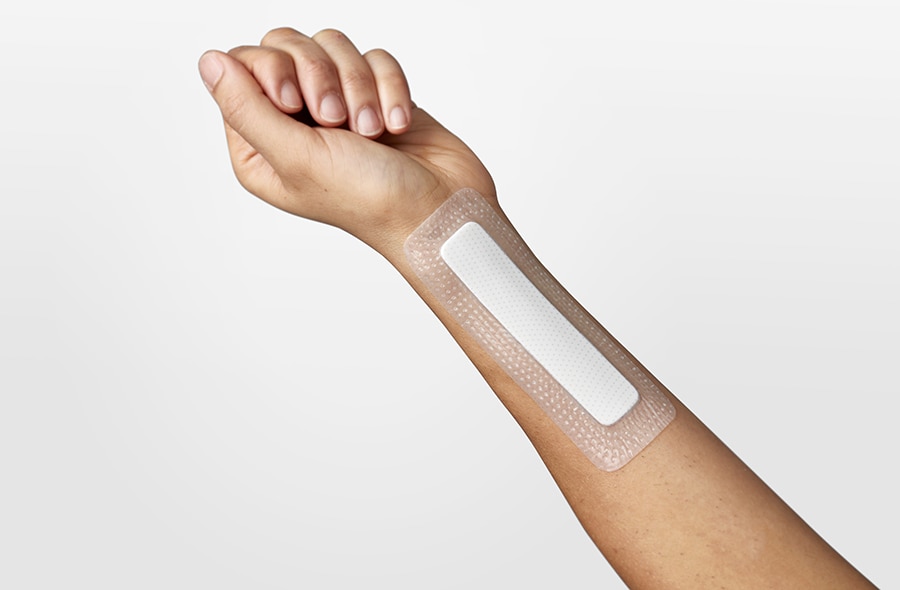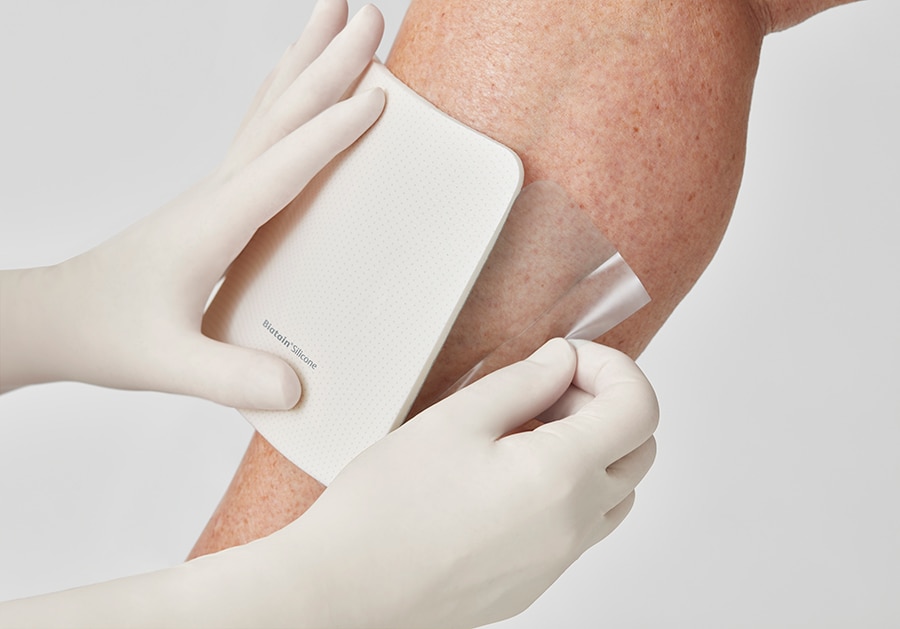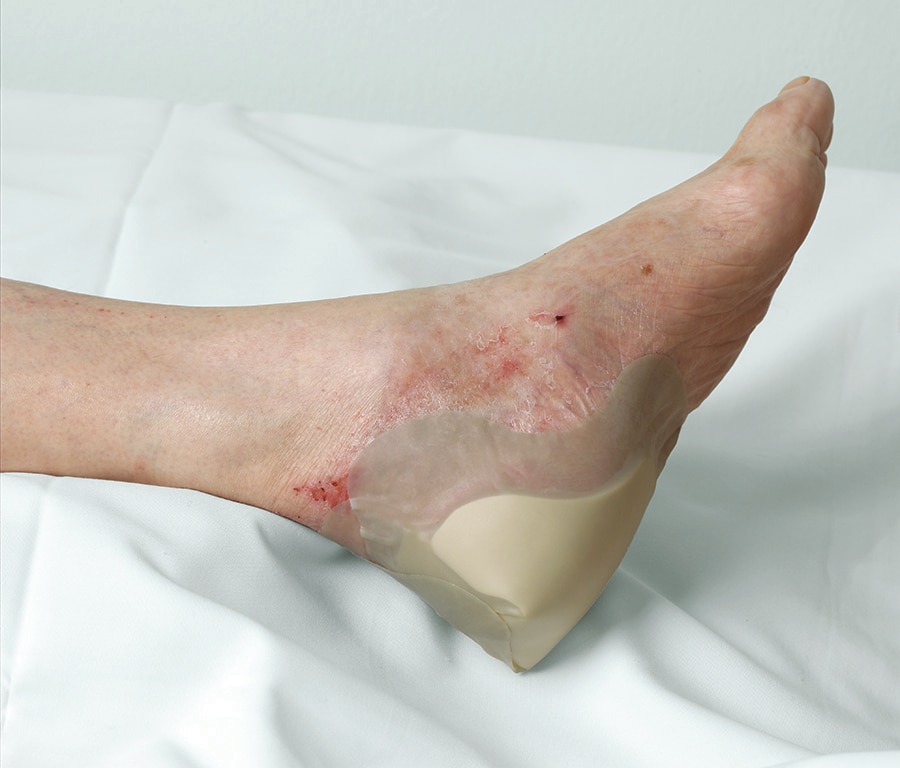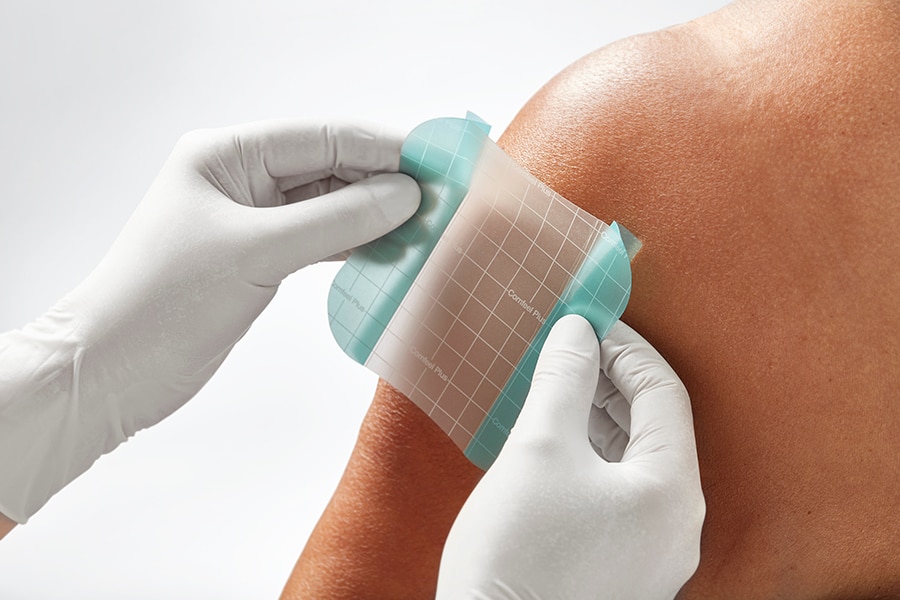Get full access with a free account
Benefits of the Coloplast® Professional Educational platform
![]() Full access to educational content, events and resources
Full access to educational content, events and resources
![]() Track your progress
Track your progress
![]() Share content with your colleagues
Share content with your colleagues
![]() Share supporting material with your patient
Share supporting material with your patient
How do I select the right contact layer?
Before selecting a dressing, you should always start by conducting a holistic assessment of your patient and their wound.1
Here are some important factors to consider when selecting a contact layer:
- Does the contact layer allow for exudate to pass from the wound to the secondary dressing? Depending on the wound’s exudate level, you want to choose a contact layer that is permeable, so exudate can be absorbed into the secondary dressing. This will help avoid leakage and maceration of the surrounding, or periwound, skin.2
- Does it allow you to monitor the wound through the dressing? Choosing a transparent silicone contact layer can allow you to monitor the wound’s progress through the dressing, allowing the wound to heal undisturbed.
- Does it stay in place on the wound? Look for a contact layer that remains stable on the wound. You want a contact layer that doesn’t slip off or cause the secondary dressing to slip.1
- Is it easy to apply and remove? Choosing contact layers that are easy to apply and remove helps avoid trauma to the wound bed and surrounding skin and can minimise pain during dressing changes.
Tips for choosing the right contact layer dressing
Look for a dressing that:
- has good exudate transfer, thereby reducing the risk of maceration and exudate pooling;
- prevents trauma and doesn’t stick to the wound bed;
- protects the wound bed and surrounding skin;
- is transparent so you can inspect the wound without removing it; and
- is easy to apply and remove.





